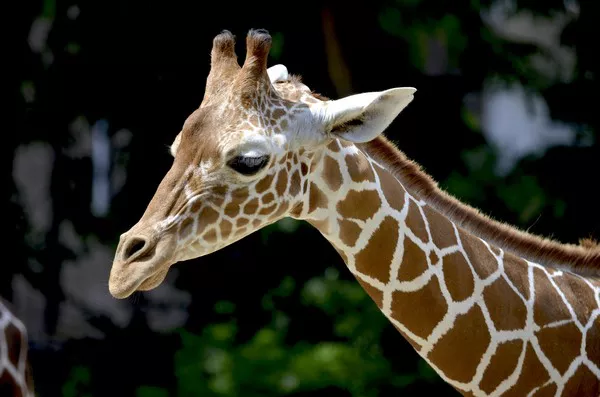In the vast tapestry of the animal kingdom, few creatures command attention and admiration quite like the tallest animal in the world. With their towering stature, elegant grace, and iconic spotted coats, giraffes stand as symbols of Africa’s vast savannas and the awe-inspiring diversity of life on Earth. In this comprehensive exploration, we delve deep into the world of giraffes, shedding light on their remarkable adaptations, unique behaviors, and crucial role in their ecosystems.
Understanding Giraffe Physiology
At first glance, the most striking feature of the giraffe is undoubtedly its elongated neck, which can stretch up to 6 feet (1.8 meters) in length. This remarkable adaptation allows giraffes to reach the leaves of tall trees, their primary source of food in the arid landscapes they inhabit. But the giraffe’s height is not limited to its neck – it is also the tallest animal overall, with adult males (bulls) standing up to 18 feet (5.5 meters) tall and weighing as much as 3,000 pounds (1,360 kilograms).
The giraffe’s towering stature is made possible by a combination of unique anatomical features, including elongated limbs, a powerful cardiovascular system, and specialized adaptations to regulate blood flow to its head. One of the most fascinating aspects of giraffe physiology is its unusually large heart, which can weigh up to 25 pounds (11 kilograms) and pumps blood with incredible force to overcome the effects of gravity and maintain circulation to the brain.
In addition to their impressive height, giraffes are also known for their distinctive coat patterns, which serve as camouflage in their native habitats. These patterns are unique to each individual giraffe and play a crucial role in social interactions, mate selection, and territorial defense.
Giraffe Behavior and Ecology
Giraffes are primarily herbivores, feeding on a diet of leaves, twigs, and buds from a variety of tree species. Their long necks and prehensile tongues enable them to strip leaves from branches with ease, while their keen eyesight and acute sense of smell help them locate food and detect potential predators.
Despite their towering height, giraffes are surprisingly agile and can run at speeds of up to 35 miles per hour (56 kilometers per hour) when threatened. They are also skilled fighters, using their powerful necks and ossicones (horn-like structures) to deliver powerful blows to rivals during sparring matches for dominance or mating rights.
Giraffes are social animals, typically living in loose herds or groups known as towers. These towers are led by a dominant male known as a bull, who is responsible for defending the group from predators and competing for access to females during the breeding season. Female giraffes (cows) and their offspring form the core of the tower, providing mutual support and protection against threats.
In addition to their social dynamics, giraffes play a crucial role in their ecosystems as seed dispersers and ecosystem engineers. By browsing on trees and shrubs, giraffes help to shape the structure and composition of their habitats, creating open spaces for other species to thrive and promoting plant diversity through their feeding behaviors.
Safeguarding the Future of Giraffes
Despite their iconic status, giraffes face a variety of threats to their survival in the wild. Habitat loss, poaching, and human-wildlife conflict are among the most pressing challenges facing giraffe populations, particularly in parts of Africa where they are still hunted for their meat, hides, and bones.
In recent years, giraffe populations have experienced significant declines, with some subspecies listed as endangered or critically endangered by the International Union for Conservation of Nature (IUCN). To address these threats, conservation organizations and governments have launched a variety of initiatives aimed at protecting giraffes and their habitats, including habitat restoration, anti-poaching patrols, and community-based conservation programs.
One such initiative is the Giraffe Conservation Foundation (GCF), which works to conserve giraffe populations and their habitats across Africa through research, monitoring, and community engagement. By partnering with local communities and governments, the GCF aims to ensure a future for giraffes in the wild and promote coexistence between humans and wildlife.
In addition to conservation efforts on the ground, raising awareness about the plight of giraffes and the importance of their conservation is crucial for their long-term survival. Through education, advocacy, and ecotourism, individuals and organizations can help to promote a greater understanding of giraffes and inspire action to protect them for future generations.
See Also: 13 Most Unique Animals In The World
Conclusion
In conclusion, thegiraffe stands as a symbol of grace, beauty, and resilience in the natural world. With its towering height, distinctive appearance, and unique adaptations, the giraffe captures the imagination and inspires wonder in people of all ages. As we strive to conserve this iconic species and safeguard its future, let us also celebrate the majesty of the tallest animal in the world and the vital role it plays in the rich tapestry of life on Earth.
You Might Be Interested In:


























